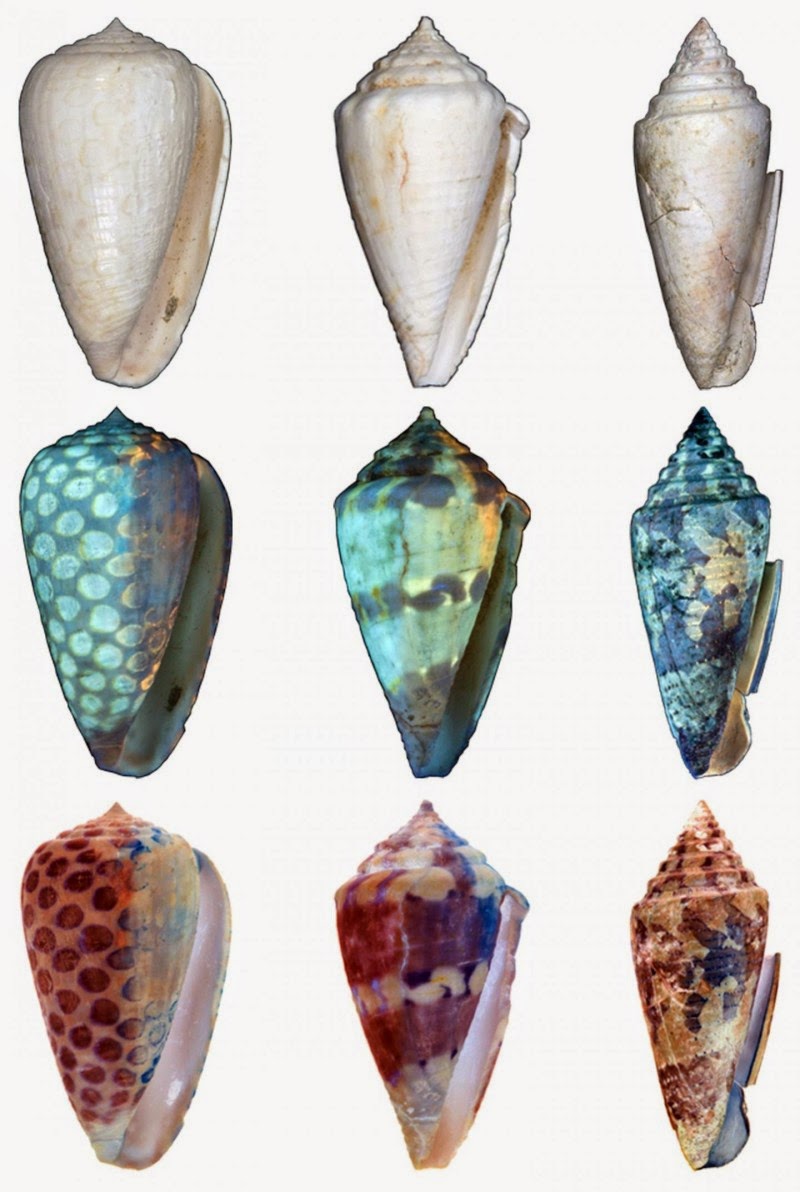
Nearly 30 ancient seashell species coloration patterns were revealed using ultraviolet (UV) light, according to a study published April 1, 2015 in the open-access journal PLOS ONE by Jonathan Hendricks from San Jose State University, CA.
Unlike their modern relatives, the 4.8-6.6 million-year-old fossil cone shells often appear white and without a pattern when viewed in regular visible light. By placing these fossils under ultraviolet (UV) light, the organic matter remaining in the shells fluoresces, revealing the original coloration patterns of the once living animals. However, it remains unclear which compounds in the shell matrix are emitting light when exposed to UV rays.
Using this technique, the author of this study was able to view and document the coloration patterns of 28 different cone shell species from the northern Dominican Republic, 13 of which appear to be new species. Determining the coloration patterns of the ancient shells may be important for understanding their relationships to modern species.
Hendricks compared the preserved patterns with those of modern Caribbean cone snail shells and found that many of the fossils showed similar patterns, indicating that some modern species belong to lineages that survived in the Caribbean for millions of years. According to the author, a striking exception in this study was the newly described species Conus carlottae, which has a shell covered by large polka dots, a pattern that is apparently extinct among modern cone snails.
Reference:
Hendricks JR. Glowing Seashells: Diversity of Fossilized Coloration Patterns on Coral Reef-Associated Cone Snail (Gastropoda: Conidae) Shells from the Neogene of the Dominican Republic. PLoS ONE, 2015 DOI: 10.1371/journal.pone.0120924
Note: The above story is based on materials provided by PLOS.










